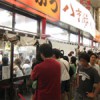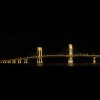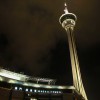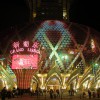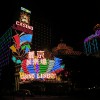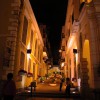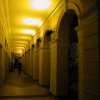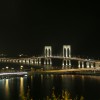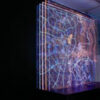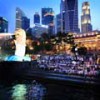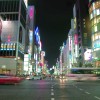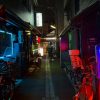Drawing shadows on white paper. Drawing lighting on blue paper.
Interviewer: Masahiro Iwata
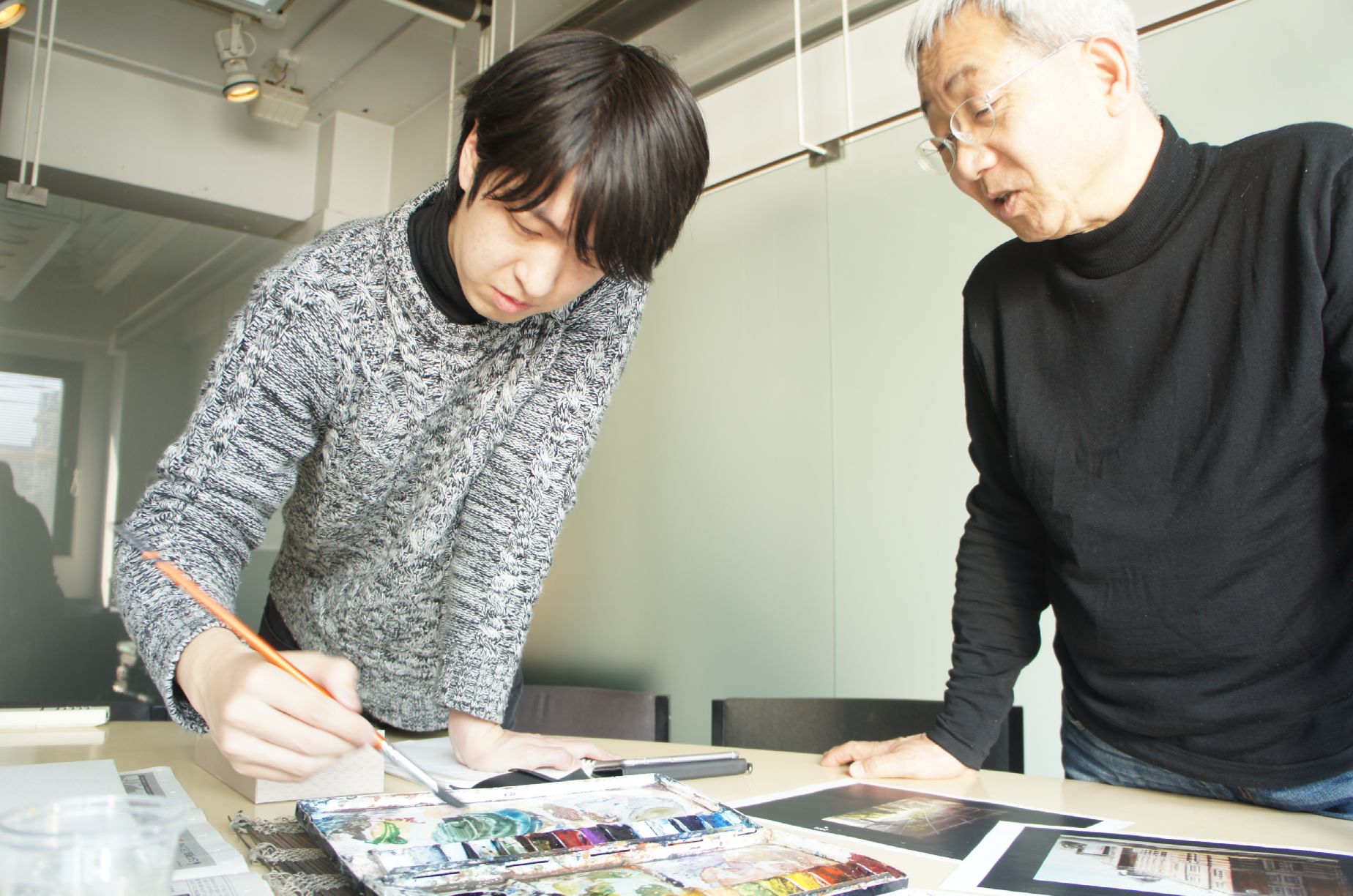
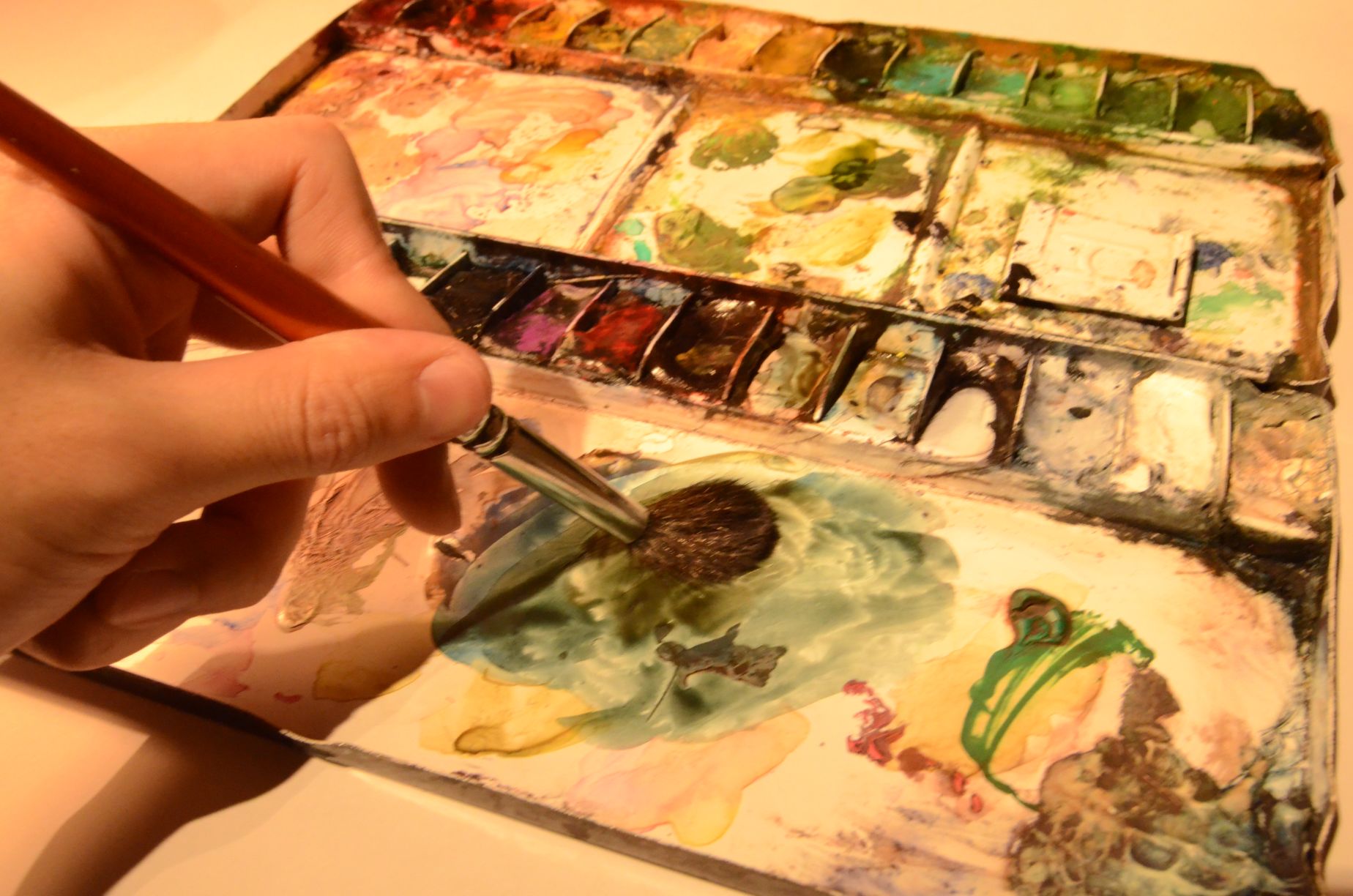
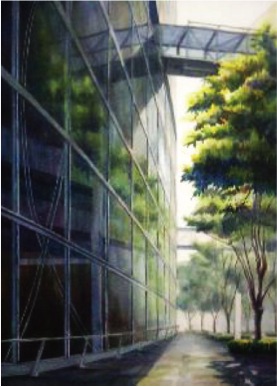
Iwata:Today I`d like to talk about the differences between painting and lighting design. From an early age I started painting with water colors. Now, I have a habit of seeing most visual spaces in terms of light and shadow. For example the intricate work of the eaves of an old temple reflecting light from the ground or light streaming into spaces of a building. When I first started at LPA you said that “lighting is similar to water colors.” That statement made an impression on me, but what did you actually mean by it?
Mende:Did I really say that?! Well, in water color painting layer after layer of paint is used to complete a painting and in lighting design layer after layer of light is often used to complete a space. Maybe this idea of layering colors is similar.
A lighting designer must use the beam of light coming from a fixture like a paintbrush to define a space. A large paintbrush might gently sweep a space and a small brush might highlight fine detail. I am always thinking “if I had this fixture in this space” and I can visualize and imagine the painting I would want to draw. Long ago I failed the entrance exam to an art university, but I spent a great deal of time painting and studying watercolors to past the exam the following year. Good paints and brushes were so expensive! I worked a part-time job and all my money went to paints and brushes.
Iwata: I was an architectural student, and while studying for the entrance exam I preferred good tools, too.
With painting one is only able to present the decided composition on a canvas, but with lighting, space can be the view from various angles for a totally different impression of a space. At a recent project construction site, I was adjusting the outdoor up lights to some trees. The spotlight shined on the center of the trunk and the main branches of the tree, creating a silhouette of the leaves when viewing the entire tree. I was really amazed by this lighting method. Instead of highlighting the tree from the outside, rather the light was shining deep inside the foliage.
Instead of just presenting the tree as it is, this method gives it more volume and a sense of depth. It was like a 3-D painting.
Mende:That was a very valuable experience for you.
Iwata:I didn`t want the talk today to get too complex, so I brought some paints so we can try and paint a few colors.
Mende: Ha! You have the same watercolor palate as me! Your palate is well-organized.
Iwata:The colors on this palate are still clean, but I have another palate that is very messy. In watercolor painting we want to make full use of the white paper up until the painting is finished, so it is important to use clean good colors. A pale layer of yellow ocher on white paper is like a faint beam of light shining on a canvas.
Mende:Watercolor artists use water paper and gradually add color. Lighting designers use navy blue colored paper and gradually add light. A method of drawing light from darkness. If I asked you to freely draw light on a navy blue piece of paper, what would you draw?
Iwata:I don`t think I have a good grasp of drawing with light formulated inside of me to show anyone, just yet. In objective painting one studies the object before them to be represented on paper. In lighting design, 3-dimensional and 4-dimensional layers are added to create the total volume along with a lot of imagination.
Mende:Many things are similar about painting a picture with a brush and designing with light, but there are also many differences. However, it all comes down to whether one has a talent for it or can unlock their inner artistic talent. Also, one has to be confident about their artistic talent and design methods, this is what makes or breaks our work as professionals.
Iwata:Creating a space with a brush of light; this is one point of view for designing with light that could help inspire some creative images. Thank you for your time today.





